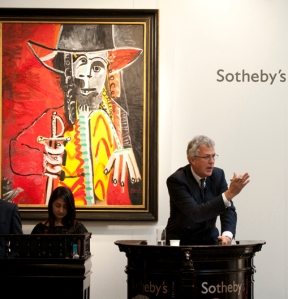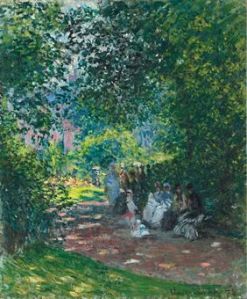Over the weekend of 2-3 October the artists and crafts people of my sleazy London borough of Lambeth opened their doors to visitors. Very civilised and generous of them but also very brave – I wouldn’t let strangers into my house, and certainly not in Lambeth.

Although using the name “Lambeth” implied the sponsorship of the local council, the events is actually done with no help at all from that ghastly organisation, which seemingly prefers to send its (or rather mine and yours) money on leaflets explaining how to use pedestrian crossings. However, Lambeth does have a terrific network of libraries, so they’re not complete philistines.
Lambeth Open is organised by Tim Sutton, who also does the Urban Art festival in Brixton. It is sponsored by the British Home, an independent charity. That is not the purpose of charities.

I did three visits in Stockwell and Oval, all within 15 minutes walk of my flat. The first stop of the day was at Phyllis Todd’s splendid house in Hanover Gardens, where the former Home Secretary Jack Straw has lived for many years. Apparently muggings increased dreadfully after Straw left the front benches because the police presence suddenly became non-existent.
I was amused to learn that Phyllis has never been to The Oval cricket ground, even though she has lived in SE11 for 20 years. Must be that Scottish upbringing.
She spoke of the challenges of painting en plein air, especially in India with its flies, people, heat and dust. I liked her abstract paintings.

From Hanover Gardens I crossed over Clapham Road to the Farmers Market in the grounds of St. Mark’s Church. I hadn’t been here before but it was really quite fun. I could not resist a pastel de nata and coffee for dessert. My sister thinks that I too many of them.

The other side of St. Marks’s is Brixton Road, where Zoom In, a “not for profit photography school”, is based.
A camera obscura had been set here up for the day. It took a while for my eyes to adjust to the darkness but the images projected onto the walls and ceilings are quite hypnotic – even of something as mundane as traffic on Brixton Road.
The final stop was at Slaughterhaus, a print workshop in an old slaughterhouse (hence the name) just round the corner from where van Gogh lived in 1873. (I bet he wouldn’t have let anybody into his house!)

The old machines are magnificent – the beauty below was made in 1833. I came across a review of Jilly Cooper’s new novel Jump! in, would you believe, the Times Literary Supplement. There is a scene in the novel in which a social-climbing porn baron praises a cider press as a fine example of modern art. Doubtless he might have mistaken these print presses for Tracy Emin’s latest masterpiece.















